Friday, the U.S. Department of Health and Human Services (HHS), announced that it is extending the application deadline for Medicaid and CHIP Provider Relief Fund distribution from today July 20, 2020 to August 3, 2020.
In June, HHS announced plans to distribute approximately $15 billion to eligible providers that participate in state Medicaid and CHIP programs who had not yet received a payment from earlier distributions from the Provider Relief Fund.
This HHS fact sheet explains the application process.
In addition, HHS is holding focus groups tomorrow and Wednesday to identify opportunities to increase application volumes in the current Medicaid/CHIP distribution. The focus group discussion will center on three topics-
- Awareness of the PRF program and Medicaid/CHIP distribution
- Understanding of program components, such as eligibility
- Technical challenges faced during the application process
These sessions will be held on Tuesday, July 21st from 6:30 – 7:30 pm ET and Wednesday, July 22nd from 3:00 – 4:00 pm ET.
To confirm your participation, please send an email to preston.white@mckinsey.com with your name, email, title, organization and state, and note which session you would like to attend.
If you have any questions, please reach out to our Director of Policy and Regulatory Affairs, Kirsten Beronio.

